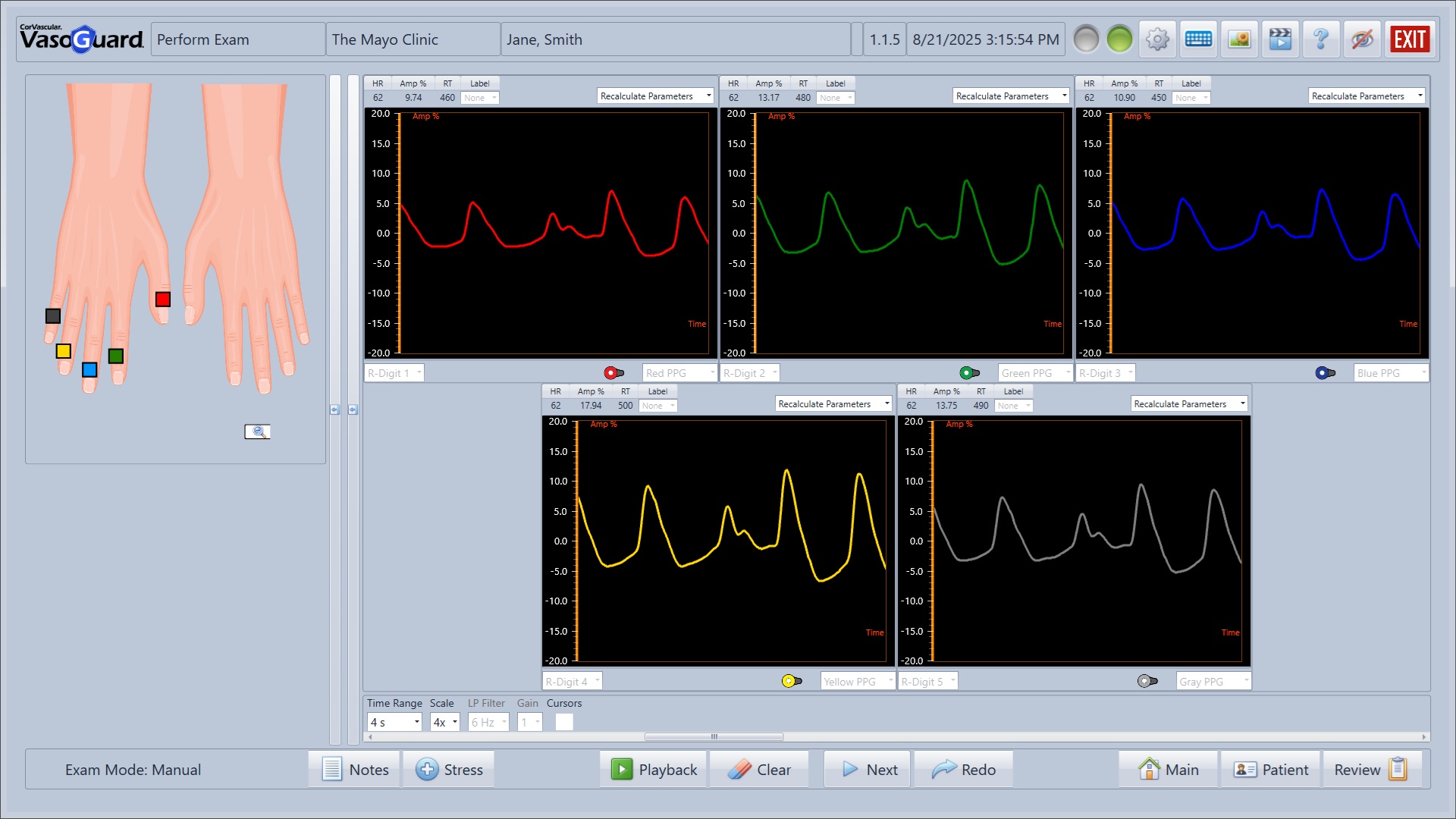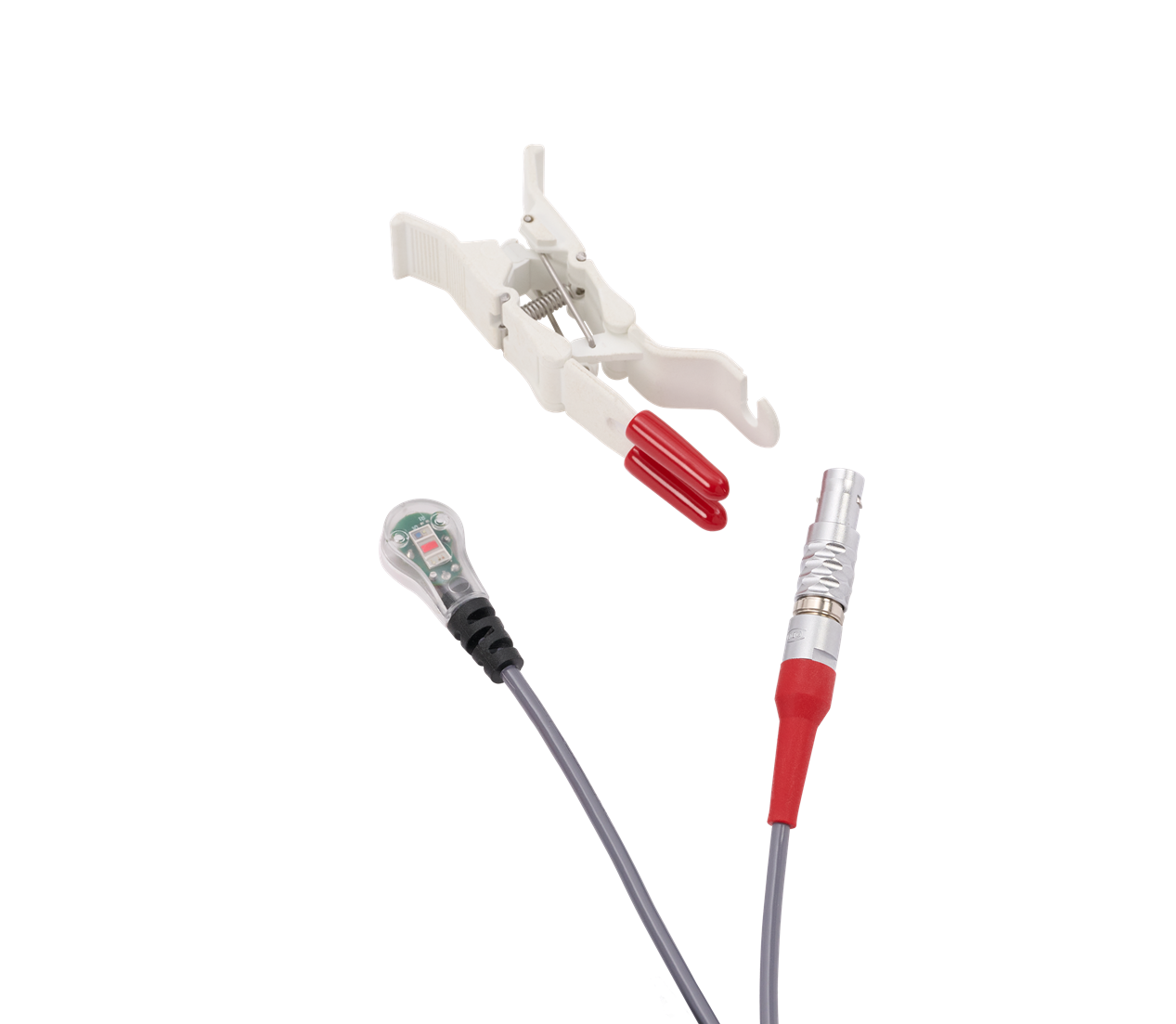Photoplethysmography (PPG)
Photoplethysmography (PPG) is a non-invasive optical technique used to measure blood volume changes in the microvascular bed of tissue. PPG is widely used for vascular assessment, especially in the fingers and toes, and provides valuable information about peripheral circulation.

PPG uses a light source and a photodetector to measure changes in blood volume in the skin. As blood pulses through the vessels, the amount of light absorbed or reflected changes, allowing the system to generate a waveform that reflects vascular health.
- Non-invasive and painless
- Ideal for assessing digital (finger and toe) circulation
- Provides real-time waveform data
- Highly sensitive for microvascular assessment
- Assessment of digital perfusion in fingers and toes
- Diagnosis of Raynaud's phenomenon
- Evaluation of microvascular disorders
- Monitoring vascular health in at-risk populations
- Assessment of peripheral circulation
- Pre and post-operative vascular monitoring
A PPG sensor emits light into the skin and measures the amount of light either transmitted or reflected. Changes in blood volume with each heartbeat alter the light signal, which is recorded as a waveform. This data helps clinicians assess peripheral perfusion and detect vascular abnormalities.
- High-sensitivity optical sensors
- Real-time waveform display
- Automated data capture and analysis
- Waterproof, medical-grade sensors
- Patient should be in a comfortable, relaxed position
- Room should be at comfortable temperature
- Remove jewelry from fingers/toes being tested
- Clean skin surface for optimal sensor contact
- Minimize movement during measurement
- Record baseline and post-exercise measurements

| Waveform Pattern | Interpretation | Clinical Significance |
|---|---|---|
| Normal | Sharp upstroke, rounded peak, gradual downstroke | Normal peripheral circulation |
| Damped | Reduced amplitude, delayed upstroke | Reduced peripheral perfusion |
| Absent | No detectable waveform | Severe vascular compromise |
| Biphasic | Double-peaked waveform | Mixed arterial/venous disease |
PPG is invaluable for:
- Assessing digital perfusion in fingers and toes
- Diagnosing Raynaud's phenomenon and other microvascular disorders
- Monitoring vascular health in at-risk populations
- Supporting clinical decision-making with objective data
- Evaluating treatment effectiveness
- Pre-operative vascular assessment
PPG is a standard tool in vascular labs and is recommended for comprehensive peripheral vascular assessment, particularly when evaluating microvascular function.

PPG testing may be reimbursable under CPT code 93922 (Limited bilateral noninvasive physiologic studies of upper or lower extremity arteries) when combined with other vascular studies. Coverage varies by payer and clinical indication.
- Check with payers for specific coverage criteria
- Include relevant symptoms and clinical findings in documentation
- Combine with other vascular studies for comprehensive assessment
- Document medical necessity for the test
VasoGuard systems feature advanced PPG technology with waterproof, high-sensitivity sensors and automated analysis. The system provides real-time waveforms, easy-to-use software, and seamless data export for EMR integration.
- Waterproof, medical-grade PPG sensors
- Automated workflow and data management
- Comprehensive reporting and export options
- Real-time waveform analysis
- Seamless EMR integration